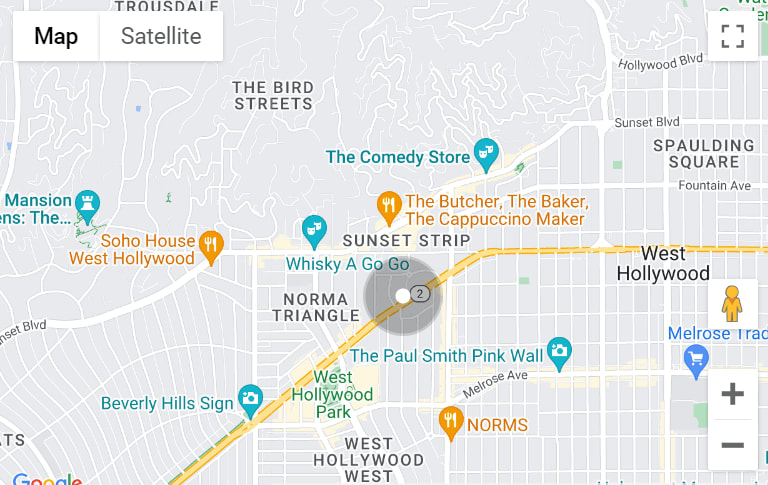Open houses hold significant importance for buyers during their home search, offering a valuable chance to engage with properties in a relaxed and informative environment. Beyond static online images, open houses enable buyers to physically explore a property, gaining insights into its layout, condition, and ambiance. This first-hand experience provides a tangible sense of the space, helping buyers envision how the rooms connect and evaluate the overall appeal. By visiting multiple open houses, buyers can make effective comparisons between properties, refine their preferences, and better understand what features are essential for their ideal home.
If you are seeking open house tips for buyers, you’ve come to the right place.
Unlocking Insights: What to Look for at an Open House
An open house is more than just a simple walk-through of a potential property; it's an opportunity to glean crucial insights that go beyond what online listings and photos can provide. Attending an open house with the right mindset and a keen eye for detail can help you gather information that will guide your decision-making process in the home-buying journey. From assessing the property's condition to gauging the neighborhood's vibe, here's a comprehensive guide on what to look for at an open house.
Curb Appeal
Assessing curb appeal is a critical open house tip for buyers. The first impression a home makes from the outside sets the tone for a buyer's entire perception. Begin by scrutinizing the condition of the exterior, including the quality of the paint, siding, and roofing. Well-maintained landscaping and a pristinely manicured lawn contribute to a polished appearance, while overgrown vegetation or neglected outdoor areas can suggest a lack of care. Pay attention to the state of the front door, porch, and any outdoor fixtures, ensuring they are clean, in good repair, and visually appealing.
Structural Integrity and Condition
Upon stepping into the open home, begin by scrutinizing the structural integrity and overall condition of the property. Look for signs of wear and tear, such as cracks in walls or ceilings, uneven floors, and water stains. These could be indicators of underlying structural issues that might require costly repairs down the line.
Inspect the doors and windows to ensure they open and close smoothly, indicating the quality of their installation and maintenance. Pay attention to the state of the roof and the gutters as well; signs of damage or disrepair can hint at potential leaks and drainage problems.
Functionality of Systems
Evaluate the functionality of the property's essential systems. Turn on the faucets and showers to check the water pressure and assess how quickly hot water is delivered. Similarly, test light switches, electrical outlets, and appliances to ensure they're in good working order. Open and close doors and windows to gauge their functionality and whether they provide adequate insulation. If there's a fireplace or heating system, inquire about their maintenance history and efficiency. These factors will contribute to your overall comfort and convenience as a homeowner.
Quality of Finishes and Materials
Examine the quality of finishes and materials used throughout the property. Assess the condition of the flooring, cabinetry, and countertops in kitchens and bathrooms. Look for signs of peeling paint, loose tiles, or worn-out fixtures that might require updating. Consider the durability of these finishes and whether they align with your aesthetic preferences. Well-maintained and high-quality materials can enhance the longevity and value of the property.
Natural Lighting and Ventilation
Pay attention to the amount of natural light that enters the property. Adequate natural lighting not only enhances the ambiance but can also contribute to energy efficiency. Look for well-placed windows that allow for cross-ventilation, which can help regulate the indoor temperature and reduce reliance on heating and cooling systems. Evaluate the size and placement of windows in relation to the room's layout and overall aesthetic.
Storage Solutions
Inspect the property's storage solutions, such as closets, cabinets, and pantry space. Sufficient storage is essential for maintaining an organized and clutter-free living environment. Consider whether the available storage space meets your needs and if it aligns with your lifestyle and belongings.
Potential for Personalization
While the property's current layout and design are important, envision its potential for personalization as well. Consider whether the space can be tailored to your preferences through minor modifications or renovations. Keep an open mind about possibilities like rearranging furniture or even reconfiguring rooms to better suit your needs.
Neighborhood Atmosphere
Beyond the property itself, take time to explore the neighborhood during the open house visit. Walk around the area to get a sense of its atmosphere and amenities. Observe the proximity of essential services, such as grocery stores, schools, parks, and public transportation. Pay attention to the noise levels within and outside the property. Evaluate the surroundings — are there desirable views or elements that enhance the property's value, such as a backyard garden or a nearby park?
Maintenance and Upkeep
Ask the listing agent or seller about the property's maintenance history. Inquire about any recent repairs, renovations, or updates that have been made. A well-maintained property indicates that the owner has taken care of its upkeep, which can bode well for its long-term condition.
The Gut Feeling and Emotional Connection
Lastly, trust your gut feeling and emotional response to the property. Do you feel comfortable and at ease within its walls? Can you envision yourself happily living in the space? An emotional connection to a property can be a significant factor in your decision-making process.
Work with the John Zimmerman Group
Attending an open house with a discerning eye and a checklist of considerations can provide invaluable insights into a potential property. By evaluating its structural integrity, functionality, finishes, and surroundings, you're better equipped to make informed decisions about whether the property aligns with your needs, preferences, and long-term goals. Remember that while open houses offer a glimpse into a property's potential, partnering with a knowledgeable real estate agent can provide deeper insights, market expertise, and a holistic perspective on your home-buying journey.
For trusted open house tips for buyers and more, work with the
John Zimerman Group. Their commitment to personalized service and expertise in the field as top
Fort Worth Realtors will make your home-buying experience seamless and successful.
*Header photo courtesy of Shutterstock

